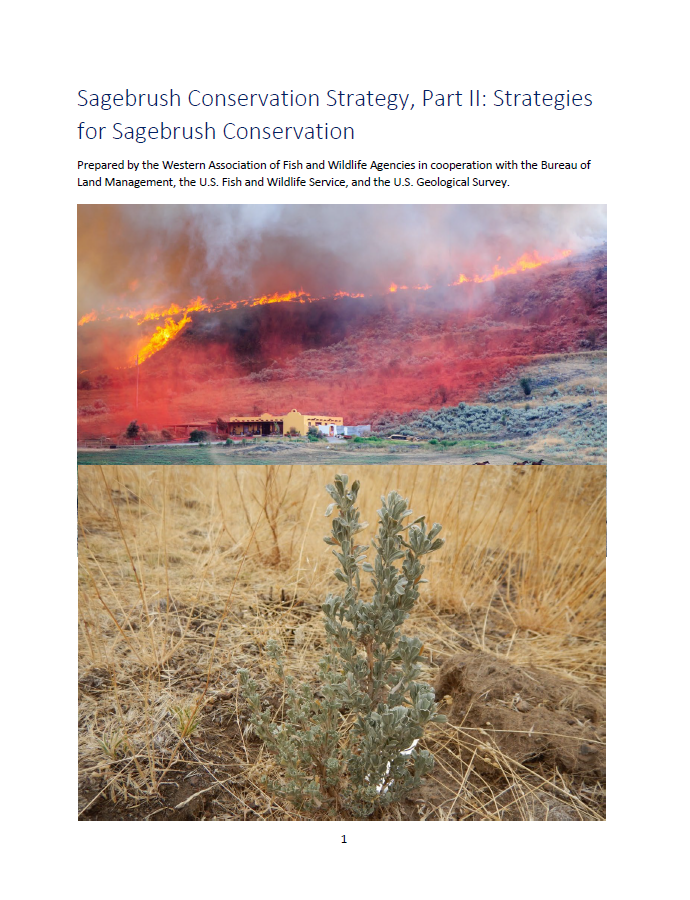The Western Association of Fish and Wildlife Agencies coordinated, with USFWS and BLM financial and technical support, and USGS technical support, the development of a 2-part Sagebrush Conservation Series because of collective concern over the status of the sagebrush biome and the wildlife species that depend on it. Part I, “Sagebrush Conservation Strategy—Challenges to Sagebrush Conservation” was published in March of 2020 and is available at the following link: Sagebrush Conservation Strategy—Challenges to Sagebrush Conservation (usgs.gov). It is an overview and assessment of the challenges facing land managers and landowners in conserving sagebrush ecosystems. It summarized the importance of the biome to people and wildlife, described the nature and extent of the numerous threats to the biome, and reviewed other sagebrush conservation challenges such as restoration of sagebrush plant communities, communication, and monitoring and adaptive management.
Part II, “Sagebrush Conservation Strategy—Strategies for Sagebrush Conservation”, this volume, describes a strategic approach to sagebrush conservation and strategies to address individual threats to sagebrush. This strategic approach uses the Sagebrush Conservation Design (SCD; Doherty, et.al., 2022) and its ecological integrity metric to inform a “Defend the Core, Grow the Core” prioritization framework and is divided into the following three sections
Section I - Describes components of an overall framework for sagebrush conservation. With individual chapters that provide a manager’s guide to inform landscapes conservation prioritization, approaches to increasing capacity across scales, monitoring and adaptive management constructs, and alternative approaches to develop partnerships and coordinate conservation actions at various scales.
Section II - Contains chapters that describe strategies and actions to address individual threats or to restore degraded sagebrush communities. Each includes a brief introductory narrative establishing the rationale and contextual basis for the strategic themes.
Section III - Highlights 15 case studies that were selected for possible best management practices and provides focused examples of successful collaborative conservation programs from across the West.
Suggested Citation:
Remington, T.E., Doherty, K.E., Deibert, P.A., and Prentice, K.L., 2024. Sagebrush Conservation Strategy, Part II: Strategies for Sagebrush Conservation. Western Association of Fish and Wildlife Agencies, Boise, Idaho. 168pp.
Attached Files
| File | Action |
|---|---|
| Sagebrush Conservation Strategy Part II | Download |
- Version
- File Type pdf
- File Size 7 MB
- Publication Date September 4, 2025
